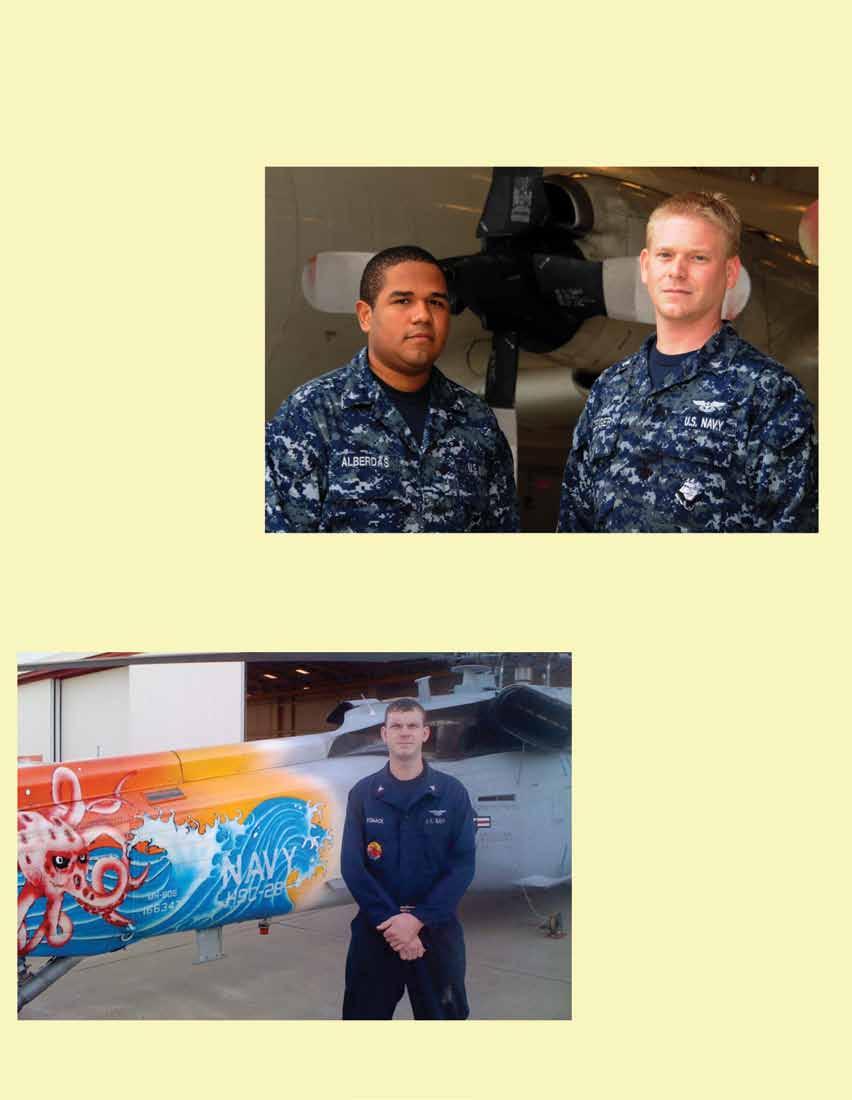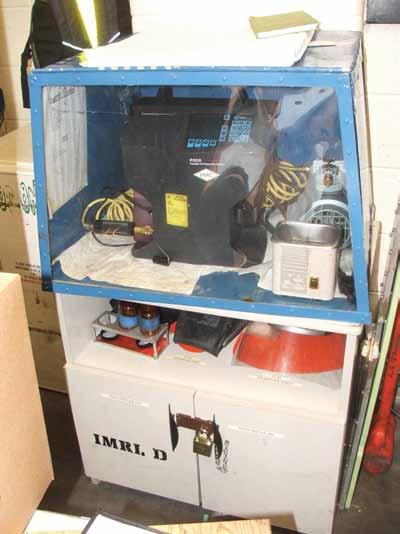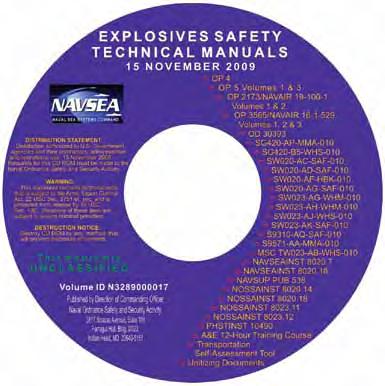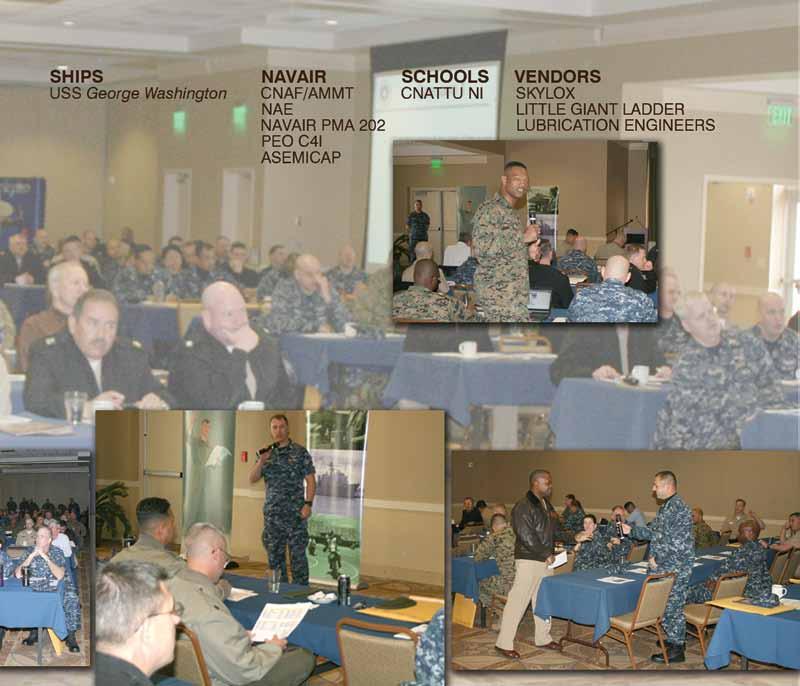
10 minute read
Crossfeed
AM3 Jeremy Alberdas and AM3 Steven Zeiger VP-45
Petty Officers Alberdas and Zeiger were walking across the flight line when they noticed numerous large pieces of FOD where a P-3C had just taxied. They quickly picked up the FOD and reported the find to QA. After a thorough inspection of the FOD, the aircraft was notified and recalled to base for inspection. An investigation revealed that the FOD had come from the No. 1 engine rear-scavengepump insulation and cone. Alberdas and Zeiger saved the aircraft from further damage and, potentially, a three-engine landing.
AM3 Brandon Womack HSC-28
While changing the mainrotor-head accumulator on Bay Raider 52, Petty Officer Womack noticed that the damper lines were chafing on the accumulator’s mountingbracket. He conducted further inspections and found that the flex coupling had been installed incorrectly, resulting in the mispositioning of the accumulator.
AM2 Fred Kalule VAW-126
Petty Officer Kalule was standing prop guard between two E-2C Hawkeyes (aircraft 600 and 603) during a hot refueling. Once aircraft 600 was fueled and final checks were complete, the plane captain turned it over to the aircraft director who signaled the removal of chocks and chains. A blueshirt ran to remove the chocks from 600 and in doing so, unknowingly headed directly towards 603’s port propeller. Petty Officer Kalule intervened quickly and stopped her before she ran into the prop.
What’s the Origin of “Bravo Zulu”?
For years, Mech has run a section called “Bravo Zulu,” a collection of short narratives telling about times when maintainers did something right. This feature, we feel, balances the rest of the magazine, which consists of just the opposite: maintainers talking mostly about errors, miscues, screw-ups and near-disasters. Every once in a while, someone asks about the origin of the term.
It originated as a naval signal, conveyed by flag hoist or voice radio, meaning “well done.” It eventually passed into the spoken and written vocabulary, attracting some myths and legends along the way. The one most frequently heard has Admiral Halsey sending it to ships of Task Force 38 during World War II. However, he could not have done this, since the signal did not exist at that time.
“Bravo Zulu” actually comes from the Allied Naval Signal Book (ACP 175 series), an international naval signal code adopted in 1949 after the creation of NATO. Until then, each navy had used its own signal code and operational manuals. World War II experience had shown that it was difficult, or even impossible, for ships of different navies to operate together unless they could readily communicate, and ACP 175 was designed to remedy this.
In the U.S. Navy signal code, used before ACP 175, “well done” was signaled as TVG, or “Tare Victor George” in the U.S. phonetic alphabet of that time. ACP 175 was organized in the general manner of other signal books, that is, starting with 1-flag signals, then 2-flag and so on. The 2-flag signals were organized by general subject, starting with AA, AB, AC, ... AZ, BA, BB, BC, ... BZ, and so on. The B- signals were called “Administrative” signals, and dealt with miscellaneous matters of administration and housekeeping. The last signal on the “Administrative” page was BZ, standing for “well done.”
At that time BZ was not rendered as “Bravo Zulu,” but in each navy’s particular phonetic alphabet. In the U.S. Navy, BZ was spoken as “Baker Zebra.” In the meanwhile, the International Civil Aviation Organization (ICAO) had adopted English as the international air traffic control language. They developed a phonetic alphabet for international aviation use, designed to be as “pronounceable” as possible by flyers and traffic controllers speaking many different languages. This was the “Alfa, Bravo, Charlie, Delta...” alphabet used today. The Navy adopted this ICAO alphabet in March 1956. It was then that “Baker Zebra” finally became “Bravo Zulu.” -- Courtesy, Naval Historical Center

crossfeed Maintenance Officer Cdr. David Peacott david.w.peacott@navy.mil Editorial Coordinators MSgt. Michael Austin michael.z.austin@navy.mil ATCS Thomas Crook thomas.crook@navy.mil
Airframes
Unique Identifier? What Unique Identifier?
By AMCS(AW/SW) Raymond Nichols
Problem: Has your hazardous material been identified uniquely for reference and retrieval? Maybe? You don’t know? Ninety percent of the commands we’ve looked at since I’ve been at the Naval Safety Center are not using the unique-identifier system as required. Most commands I’ve surveyed have material-safety-data sheets (MSDS) located in a binder numbered in the order by which they appear in the authorized-user-list (AUL). Those same commands, though, have not put a unique identifier on individual hazmat containers, so there’s no correlation between the hazmat and the MSDS/AUL.
Solutions: Your command, per OPNAVINST 5100.23G, chapter 7, para. 0702(g)(5), is responsible for maintaining a quick reference for retrieval. That quick reference needs to be organized so the AUL, MSDS, and individual hazmat containers all have the same numbering.
For example, if your MSDS for MIL-PRF-83282 is the first MSDS in binder No. 1, then you could make the unique identifier for MIL-PRF-83282, B1-1. B1-1 then must be on the AUL, the MSDS, and on all MIL-PRF-83282 containers. The idea is to keep it simple, so simple that anyone can understand the system and easily find an MSDS for a particular piece of hazmat.
Ask a maintainer to retrieve an MSDS for hazmat you’ve checked out, and then see how long it takes him or her to find it (if they can). Slap on a unique identifier, repeat the process, and then see if he or she can locate the correct MSDS any faster. Training your people how to use the reference system is important. A unique identifier is no good unless you’ve trained everyone how to use it.
Senior Chief Nichols is a maintenance analyst at the Naval Safety Center.
Avionics
Are You Grounded?
By ATCS(AW/SW) Thomas Crook
Problem: During recent visits to squadrons, I’ve seen various methods of preventing electrostatic discharge (ESD). Most commands have good-to-excellent programs. But, there still are some misconceptions regarding proper grounding points. Of greatest concern: Using electrical outlets to ground ESD stations.
Both the NAVAIR 17-600-193-6-1 pre-op checklist for ESD protection-devices, and the NA 17-600193-6-2 periodic-maintenance-requirements manual for the Pace soldering-station caution against connecting ESD grounds to AC outlet
ground-wires. If the electrical-distribution-system has a fault or if there is a system failure in building or shipboard circuitry, the power will “look for” the easiest path to ground. Once that ESD wrist-strap is on, whoever is wearing it may have unknowingly become the path of least resistance and could be shocked.
Solutions: If your work center does not have a dedicated ground available, contact your local Naval Facilities (NAVFAC) about installing one. If you have one, make sure it’s been tested within the last 24 months. Other options: Use one of the grounds in the hangar-bay or a properly tested structural frame in a building. Also, per para. 40.1 of appendix F of the Mil-HDBK-263B, consider the following: “ESD protective materials and equipment that are to be grounded should be attached to the earth electrode subsystem of the facility (see MIL-HDBK-419) or attached to a ground constructed and tested in accordance with NFPA 70.”
Senior Chief Crook is a maintenance analyst at the Naval Safety Center and coordinates the Crossfeed section of Mech.
Hydraulic Contamination
PPE: Poorly Protected Environment
By GySgt. Edward Rivera
Problem: Plenty of units we’ve surveyed have shown us how not to (and where not to) store a portable oil-diagnostic-system (PODS) machine. For instance, we’ve seen them placed next to the shop grinders and drill presses. Not a good idea—why would you contaminate a machine used to check for contaminants in oil?
Solutions and Best Practices: As maintainers, we need to recognize the importance of a clean work environment, especially when it comes to the PODS machine. You have to be creative and request the support of the maintenance department and QA for resources to purchase whatever you need to maintain this machine and the contamination-control program to the highest level of cleanliness. Recently, I visited VAW-125, here at Naval Station Norfolk. They had a model program. All the stuff they used to keep the PODs machine clean (shown in the photo) was manufactured locally by the work center.
Gunnery Sergeant Rivera is a maintenance analyst at the Naval Safety Center.

Ordnance
Check Your Ordnance Pubs, Check ‘Em Often
By MSgt. John Higgins
To stay safe, our Sailors and Marines have to use the most current checklists. The NAVAIR 01-700 “Airborne Weapons/Stores Manuals Checklists Publication Index” is a valuable tool in verifying that each checklist in the work center is the most current version.
Prior to this year, this publication was updated, printed, and distributed quarterly. Printing and/or distribution issues often have caused as much as a two-month delay in getting this valuable information to units. In order to fix this problem, the index is now available monthly and is no longer printed and distributed to the fleet in hard copy. Instead, it is available on the NATEC website: https:// mynatec.navair.navy.mil.
If you want to print your own copies, you’ll need to print the cover sheet, contact pages, and the pertinent pages related to your specific platform.
Even if your unit wants to save some trees and forego printing it, you still must use it. One suggestion: Place a locator sheet and a monthly verification log in the disbursed technical-publications library (DTPL) binder near the checklists. Teach Sailors and Marines how to find and use the 01-700 online and annotate their verifications monthly.
During our surveys, we continue to see squadrons with outdated copies of the explosive-safety technical-manual (ESTM) CD. The ESTM is an excellent consolidated source of NAVSEA publications. While these pubs are available online, limited internet connectivity (and operating out of remote locations) necessitates that explosive handlers maintain on-hand (updated) versions of the CD. It contains the NAVSEA OP 4 and NAVSEA OP 5, as well as other important and useful publications, including the NAVSEA SW020-AD-SAF-010 “Explosives Safety Accidents and Lessons Learned.” This is an extremely useful tool when training our personnel on the dangers associated with handling ordnance. All work centers that handle explosives (PR, AME, flight equipment and seat shops) should have this CD or at least have it available in their central technical-publications library (CTPL). The most current version of the ESTM is dated 15 November 2009. Direct all NAVAIR 01-700 questions and concerns to Patti Marquis, NAWCWD China Lake, CA, (760)939-1577 (DSN 437), email: patti.marquis@navy.mil; or, Mark Millis, NAWCWD China Lake, CA, (760)939-4501 (DSN 437), e-mail: mark.millis@navy.mil.
Questions or concerns about the ESTM? Contact Chris Chapin, NSWC Indian Head DET Earle, Code E421, (732)866-2851 (DSN 449), email: christopher.chapin@navy.mil.
To get copies of the ESTM CD, contact Dawn Lauer, Naval Packaging, Handling, Storage, and Transportation Center, (732)866-2980 (DSN 449), email: dawn.lauer@navy.mil.
Master Sergeant Higgins is an explosives/weapons analyst at the Naval Safety Center.

Safety Conference
Maintainer’s Review of the Aviation Maintenance Safety Conference
By AMEC(AW) Eric Wickham
The Aircraft Maintenance and Material Division at the Naval Safety Center (NSC) recently hosted the 8th annual aviation-maintenance safety conference at Naval Station Norfolk. Gathering together multiple platforms and various maintenance professionals from across the Navy and Marine Corps team, the conference was another ideal opportunity to compare ideas, talk shop and discuss the current safety trends across the fleet.
More than 100 representatives from more than 70 commands attended the four-day conference, hearing presentations from NSC, NAVAIR and vendors. Discussions focused on aircraft maintenance and aviation programs, and included other pertinent topics such as fatigue awareness and PMV safety.
Commander, Naval Safety Center, Rear Admiral Arthur Johnson, kicked off this year’s event

by emphasizing the way forward: a 75 percent reduction in mishaps by FY12. He challenged all in attendance to use time critical ORM not just on the job but also in off-duty activities.
The open-forum concept of this year’s conference allowed for some great back-and-forth discussions on key safety concerns. Numerous attendees approached me afterwards and shared with me how surprised they were to see other commands facing similar safety and program issues.
NSC staff provided presentations on NAMP programs, human factors, mishap investigations, flight operations, risk management, and media products. Representatives from NAVAIR and NAE spoke about future directions/programs. CNAF/ AMMT representatives gave a trend-analysis brief based on their fleet-wide inspections.
The following vendors attended this year’s conference: SKYLOX, makers of aircraft circuit-breaker tagout systems. Lubrication Engineering (featured in Mech articles about clear-grease guns) Little Giant Ladders, which unveiled a prototype of their new aircraft-maintenance ladder.
The conference could not have happened without the dedicated NSC team and the commands that attended and participated. A list of those attendees is included below.
The staff is planning to take next spring’s conference to NAS North Island. I hope to see many of you there.
Chief Wickham is a maintenance analyst at the Naval Safety Center.











